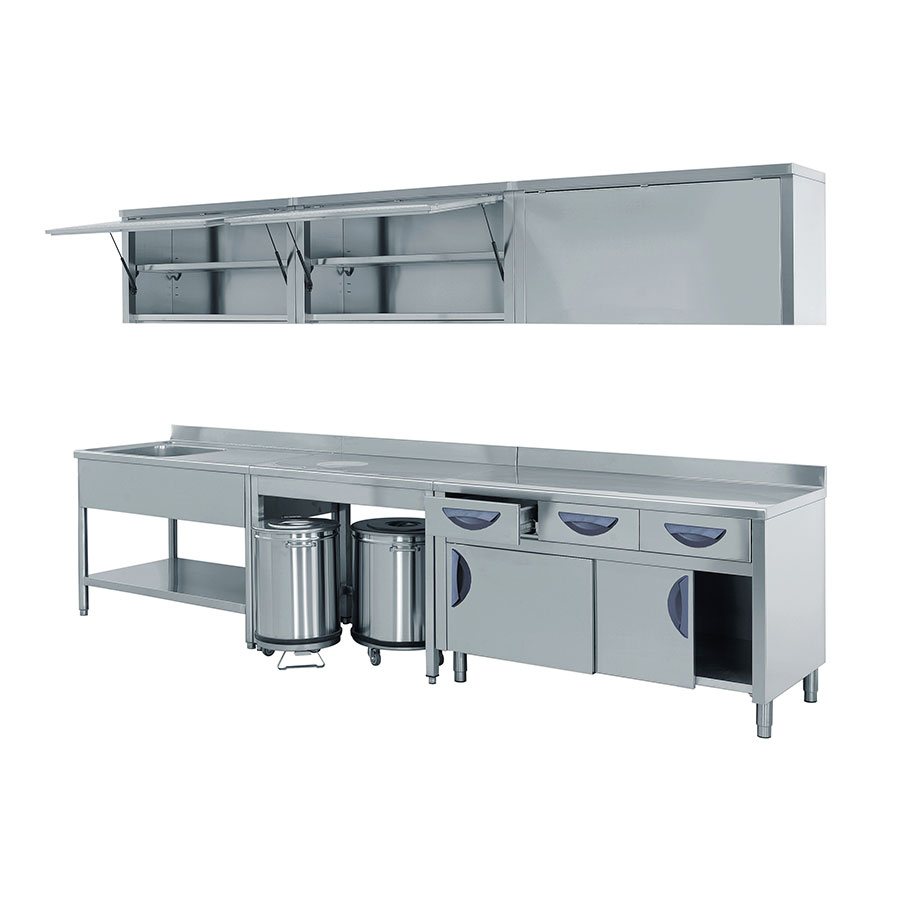
STAINLESS STEEL FABRICATIONS
Harry Brearley was a metallurgist, born and raised in Sheffield, UK in between XIX and XX century.
He was taught this job by his father when he was only 12 years old. Not something unusual for sure in a city known as the European Capital of the Metallurgy.
During the period immediately before the Great War, Western Countries Governments were spending a huge portion of their budget on military expenses.
Arms’ manufacturing was potentially a big source of income for metal fabrication companies.
He decided then to research new material for the weapons barrels which could resist the erosion due to the high temperatures.
One day, he was amazed at one particular alloy.
When he was about to etch this in a highly corrosive mineral acid, he found out it was overly resistant to many acid solutions.
So, here’s Brearley’s idea: testing it to those acids very common in a kitchen, as such vinegar, tomato, lemon juice, and then make of this a new material for cutlery, pans and all sort of catering equipment.
A new material that could finally avoid unhygienic rusting.
So no sooner said than done.
“Rustless steel” (Brearley was convinced to change its name to “stainless steel” soon) has been, since then, the backbone of the catering equipment business!
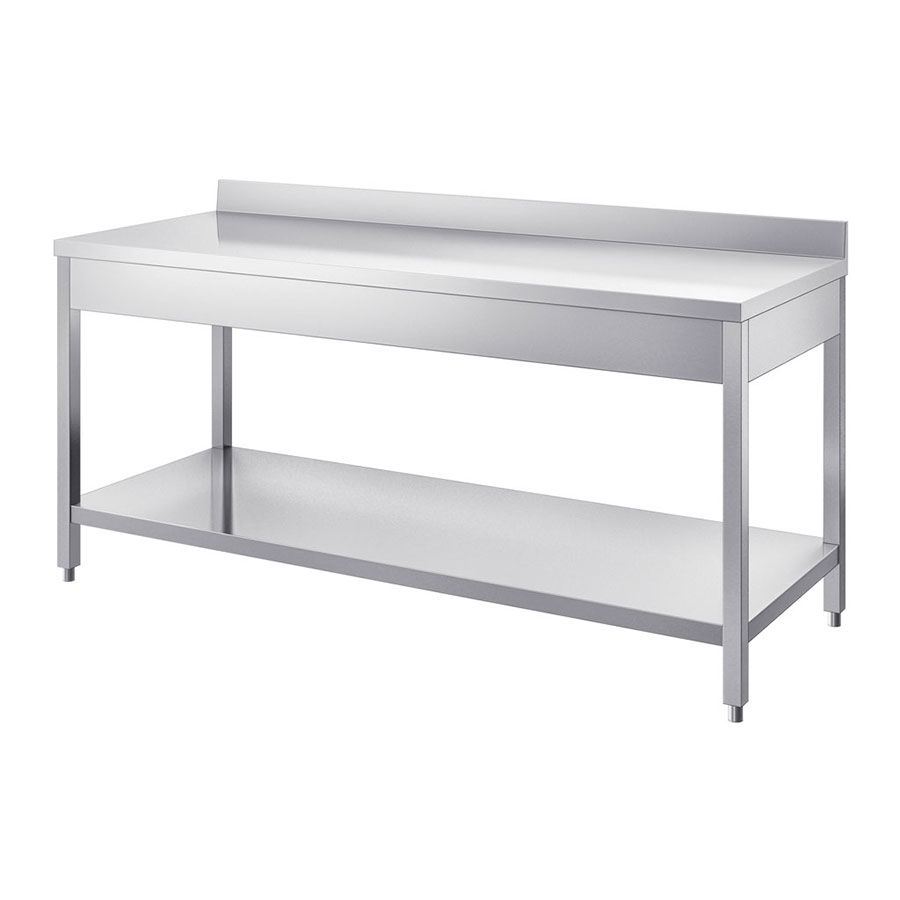
WORK TABLES
What if I tell you you can have a starship in your kitchen?
Better said: you could assemble one using prep tables and all the other furnishing.
They’re made of stainless steel after all. Just like the SpaceX Starship, the space vehicle projected by Elon Musk’s company.
Yes! Not a long ago the South-African-born entrepreneur announced that the Starship will be constructed out of stainless steel, and not of carbon fibre, as it has been so far for space vehicles.
The decision was mostly made because of the most reasonable price, the easiest availability, and the strength and resistance to high temperatures.
Ok, the alloys are different (AISI 301 for the Starship, AISI 304 for the catering equipment). And the Starship project itself is still at the prototypal stage.
Anyway, enough to say that stainless steel is “out of this world“.
Terrible pun apart, buy Inox Bim stainless steel fabrications for your kitchen!
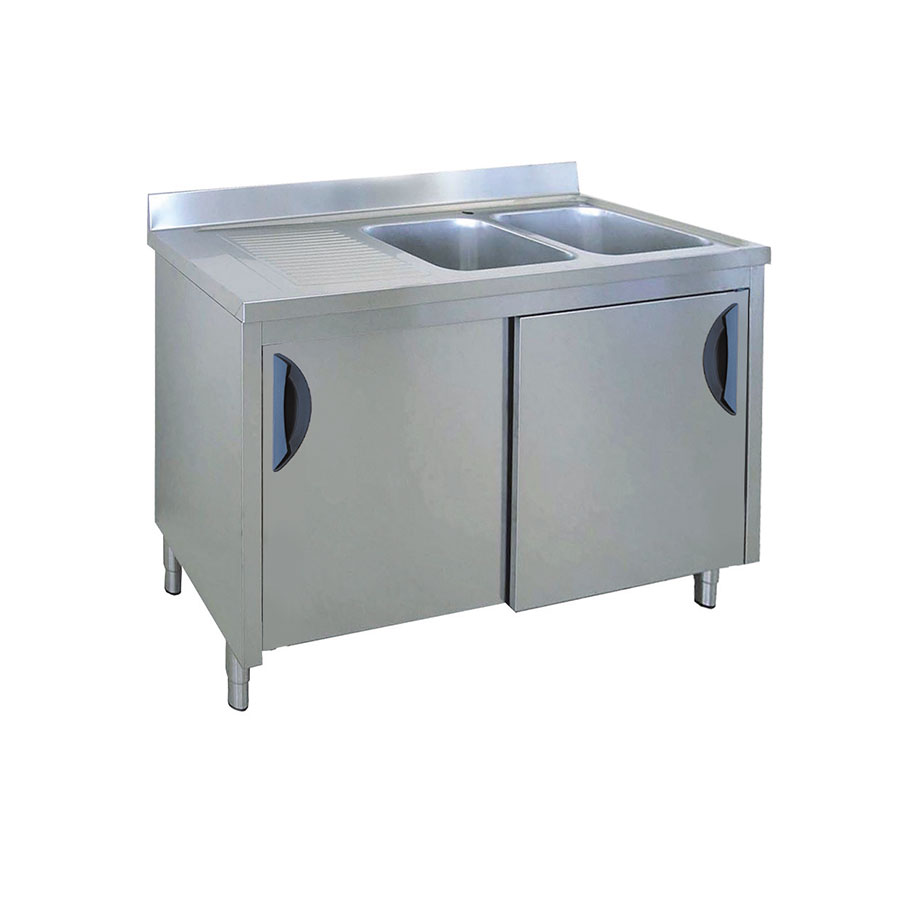
SINKS
Do you like The Simpsons? Well, I have loved them, ever since I was a child.
Anyway, in one episode (Bart vs. Australia), Lisa explains to Bart that, in the northern hemisphere, water flows counter-clockwise, and in the southern hemisphere clockwise, due to the “force of Coriolis“.
In reality, the “Coriolis force” is an “apparent force“: a force that an observer sees on a par with other forces in certain circumstances.
But let’s get back to the point …
Well, no! The sink, like the bathtub, or the swimming pool, empties in too short a time to exert such force.
It has even been calculated that to see the water flow in the other direction, it would be necessary for the tub to be completely symmetrical, in a room totally devoid of drafts, and to leave the water in the tub to “rest” between filling and emptying, for about 18 hours.
However, Inox Bim manufactures stainless steel sinks for professional kitchens and more.
But don’t waste water doing senseless experiments though!
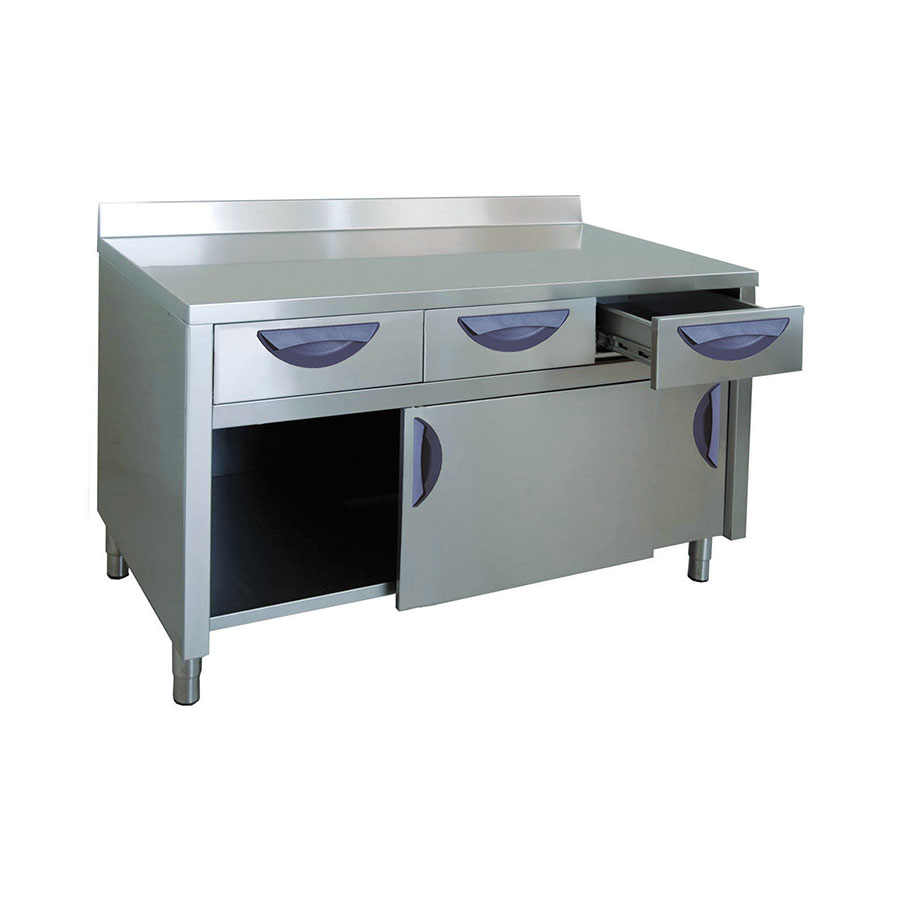
CUPBOARDS
One day, back in September 1991, a German couple, Mr and Mrs Simon were hiking in the Ötztal Alps, on the Austrian–Italian border.
At a certain point, they discovered a skeleton: at first, they thought it belonged to some poor unfortunate mountaineer who never returned back home.
Not long afterwards, it turned out those human remains belonged to someone much older: they had just found Ötzi’s body.
A natural mummy of a man (maybe a shepherd, maybe a noble warrior) who had lived during the Chalcolithic age, around 5200 years ago.
Not very tall (according to our current standards), he was only 1.60m, thin (he weighed only 50kgs at the time of death), 45 years of age, and with a body covered in tattoos (you didn’t see this coming, did you? Well, he had 61 of those).
Among the objects he carried, there was also a spear with a tip made of 99.7% pure copper (that’s why the chalcolithic is also called the “Copper Age”).
Now, has it ever happened to you to remove the protective film from stainless steel? It is never as easy as they want us to believe… “lift a corner and pull” my arse!
For this job, copper is ideal: gentle, resistant, and it doesn’t scratch the metal.
So, get inspired by Ötzi and build a spear made of copper yourself! Very suitable also for the Inox Bim Cupboards!
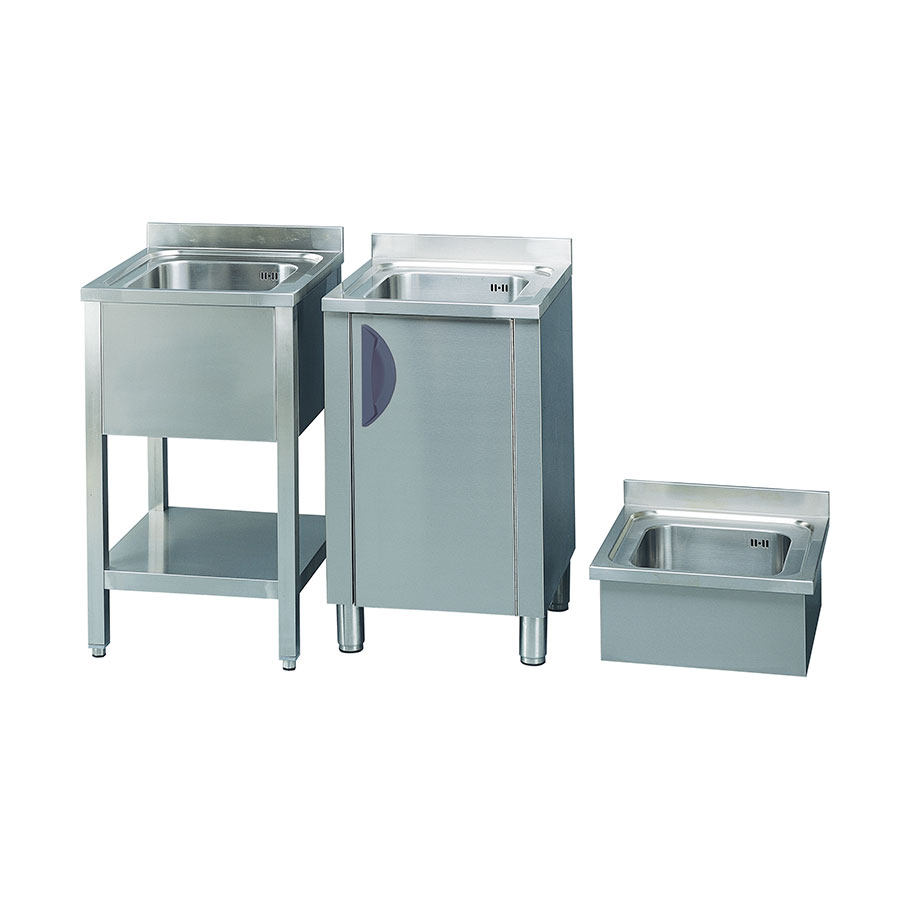
HANDBASINS
On the 2nd of July, Charles J. Guiteau, a schizophrenic and paranoid lawyer with delusions of grandeur, fires four shots at the US president, James A. Garfield. Two of these hit the mark. Nevertheless, they didn’t damage any vital organ.
The president is immediately taken to the hospital, where the doctors examined him, probing the wound and tried to extract the bullets with unwashed fingers.
The infection caused by this wrong practice costs Garfield an internal abscess and pneumonia.
On 19th September, the President passed away.
So, yes. Either for performing surgery or cooking, wash your hands properly!
And Inox Bim has got stainless steel hand basins in its portfolio!
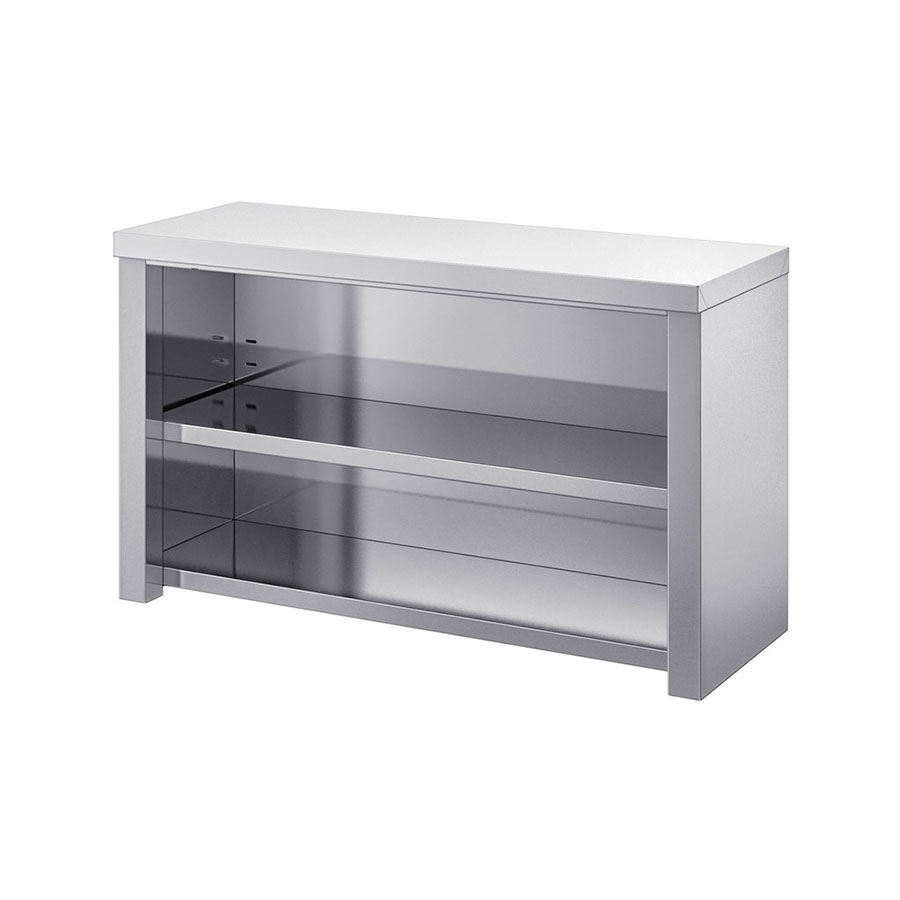
WALL CUPBOARDS
The evocative mystery of the holes in the stones of the Colosseum has given rise to several legends, all centred on the myth of the stoic resistance of Rome and its symbol over the centuries.
Could it have been attempts by the barbarians to tear down the amphitheatre? Or signs of firearms from the troops of the Landsknechts during the Sack of Rome in 1527? Or unpleasant memories of the artillery clashes between Allies and Axis forces during World War II?
Well, the answer can be disappointing. The secret of the holes in the walls of the Colosseum is basically not a secret. These are in fact nothing more than holes made by the workers of the time to insert the metal clamps that were used to keep the stone blocks, gates, grates or other furnishing fixed.
So, if you are about to fix some Inox Bim wall cabinet on the wall, know that in a few centuries your kitchen could become popular as a sort of fascinating enigma!
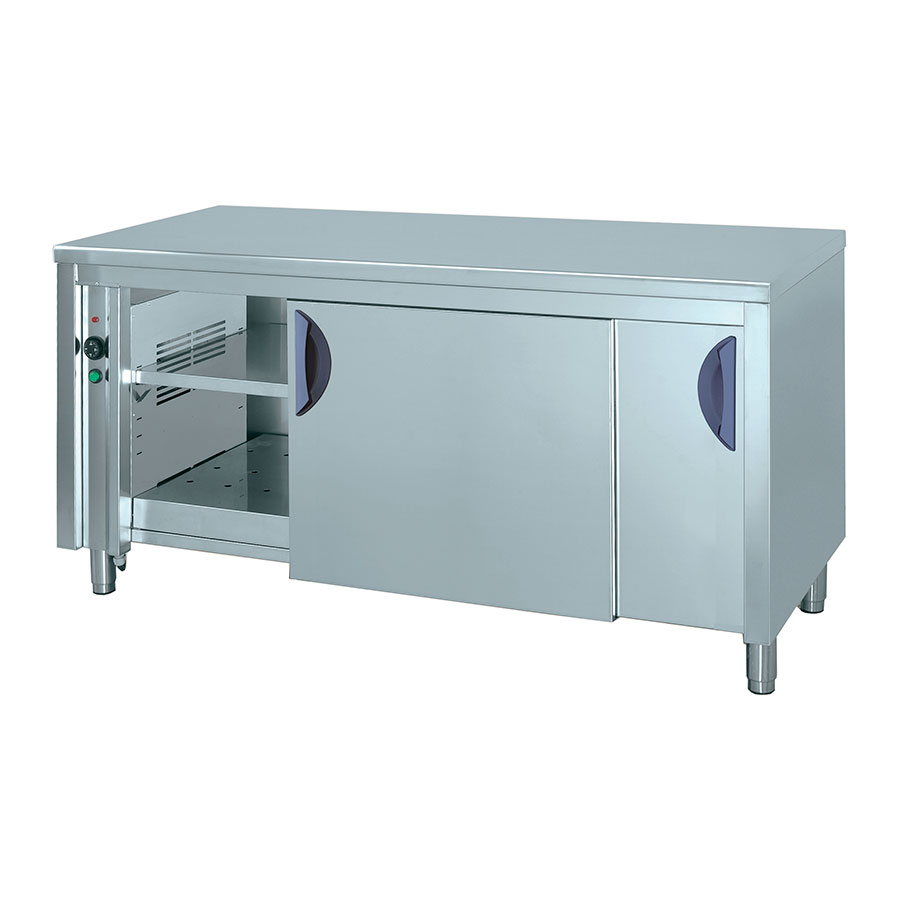
HEATED CUPBOARDS
Some dishes have to be served on heated plates. And we all know the main reason is that by doing so, they will cool down slower.
And why is that? Thermodynamics, what else?
More precisely, it depends on the “heat capacity” of the plate. That is to say: the amount of heat necessary to change the temperature of a unit of mass of a certain substance.
Now, restaurant dishes are generally made of ceramic, a material with a good heat capacity (it can absorb heat without changing quicky its temperature). Long story short: it can keep the temperature constant for longer, absorbing less heat from the food.
In conclusion, to calculate the temperature for optimal service, it would be enough just to keep in mind the temperature at which the food should be eaten, the initial temperature the food has when it is put on the plate (along, obviously, with the average temperature of the latter), an estimate of the time needed to consume the food, the surrounding air temperature (and perhaps the relative humidity rate, if you want to be fussy), and obviously the specific heat (given by the ratio between heat capacity and mass) of both plate and food.
Or just trust me. Heat the dishes and the food will cool more slowly!
PS: I recommend you do it with Inox Bim heated cupboards. In a completely disinterested way, huh?
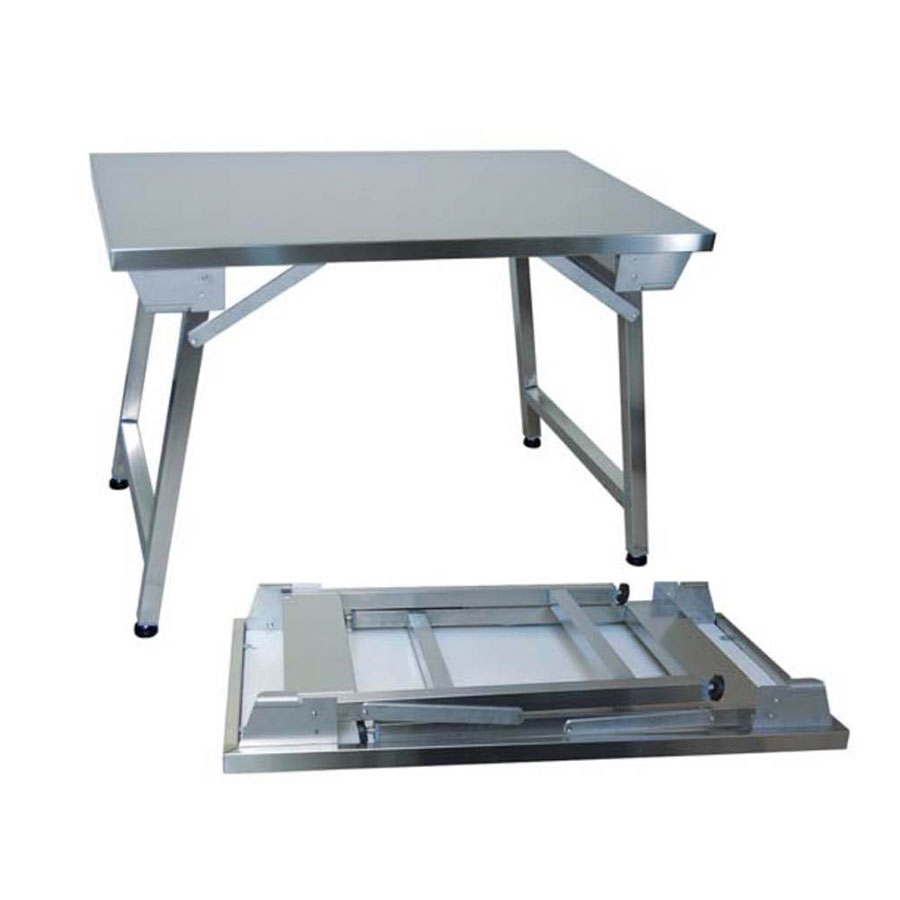
FOLDING TABLES
Have you ever heard of an Italian Punk-Rock Band named Skiantos?
Well… if you’re not Italian, or not into punk, you might probably not.
But there’s a fun fact.
During a Rock Festival held in Bologna (Italy) in April 1979, they brought on stage a functional kitchen, a table, a TV and a fridge. They set the table, they cooked spaghetti and then ate it, without actually playing anything.
The audience protested loudly, but the frontman, Roberto Antoni, shouted at them:
“You don’t understand a f***ing thing: this is avant-garde! Avant-garde, you pieces-of-s**t!”
And the moral of the story is: there’s never an inappropriate time to cook spaghetti and to enjoy them!
So, make sure you have the Inox Bim stainless steel folding tables, the best for cooking outside!
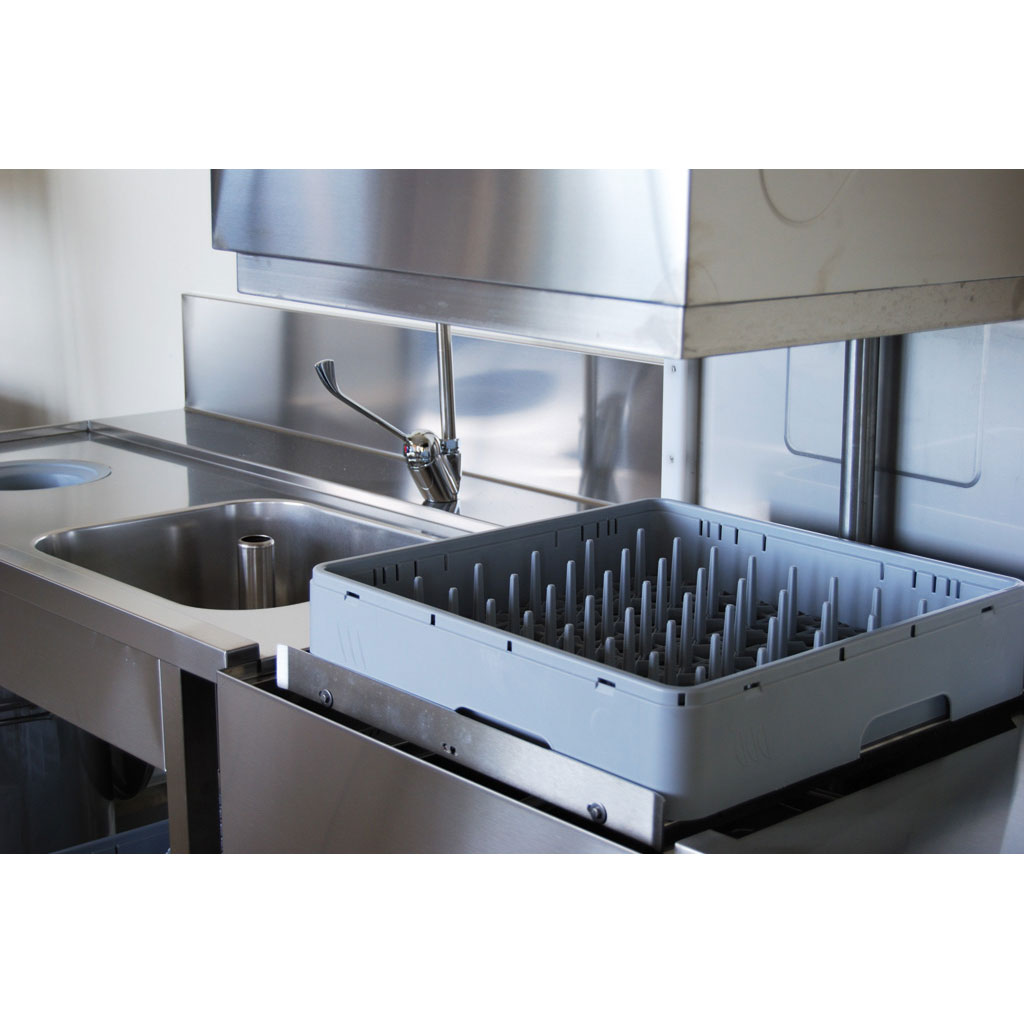
DISHWASHER ENTRY/EXIT TABLES
“He (the cook) is an artist, but his art is not cleanliness. (…) When a steak, for instance, is brought up for the head cook’s inspection, he does not handle it with a fork. He picks it up in his fingers and slaps it down, runs his thumb round the dish and licks it to taste the gravy, runs it round and licks again, then steps back and contemplates the piece of meat like an artist judging a picture, then presses it lovingly into place with his fat, pink fingers, every one of which he has licked a hundred times that morning. When he is satisfied, he takes a cloth and wipes his fingerprints from the dish, and hands it to the waiter. And the waiter, of course, dips his fingers into the gravy—his nasty, greasy fingers which he is for ever running through his brilliantined hair. Whenever one pays more than, say, ten francs for a dish of meat in Paris, one may be certain that it has been fingered in this manner. In very cheap restaurants it is different; there, the same trouble is not taken over the food, and it is just forked out of the pan and flung on to a plate, without handling. Roughly speaking, the more one pays for food, the more sweat and spittle one is obliged to eat with it.”
G.Orwell, Down and Out in Paris and London, 1933
Luckily, times have changed! Nowadays cooks, and kitchen staff in general, are much more attentive to hygiene. This is why I suggest taking a look at Inox Bim Entry/Exit Tables for Dishwashers!
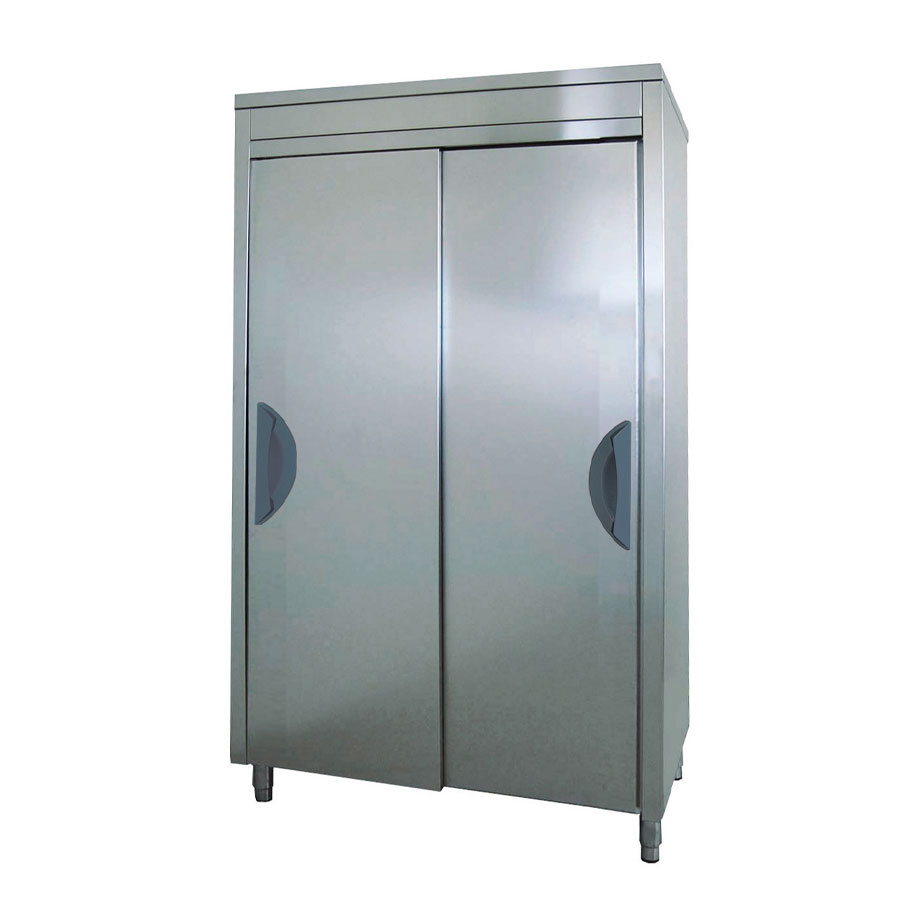
STORAGE CABINETS
From the second half of the 16th century, and up to more or less the beginning of the 19th, a phenomenon had been quite popular among the nobles families all over Europe: the “Wunderkammer“.
Although this name, literally translated from German, means “room of wonders”, initially it was a wooden cabinet, of which dimensions could vary, where not only precious relics were stored, but also historical and cultural finds. and naturalistic, as prototypes of new inventions, ancient coins, stuffed animals and fossil finds.
In short, a real “cabinet of curiosities” (the richest even had an entire room) made available to guests, and, on certain days of the year, also to visitors from all walks of life, which marked the first step towards the establishment of museums as we know them today.
This is exactly what I’m trying to do with this website: a “virtual” cabinet of curiosities.
By the way, Inox Bim has a complete range of locker and storage cabinets. Real, not virtual ones.
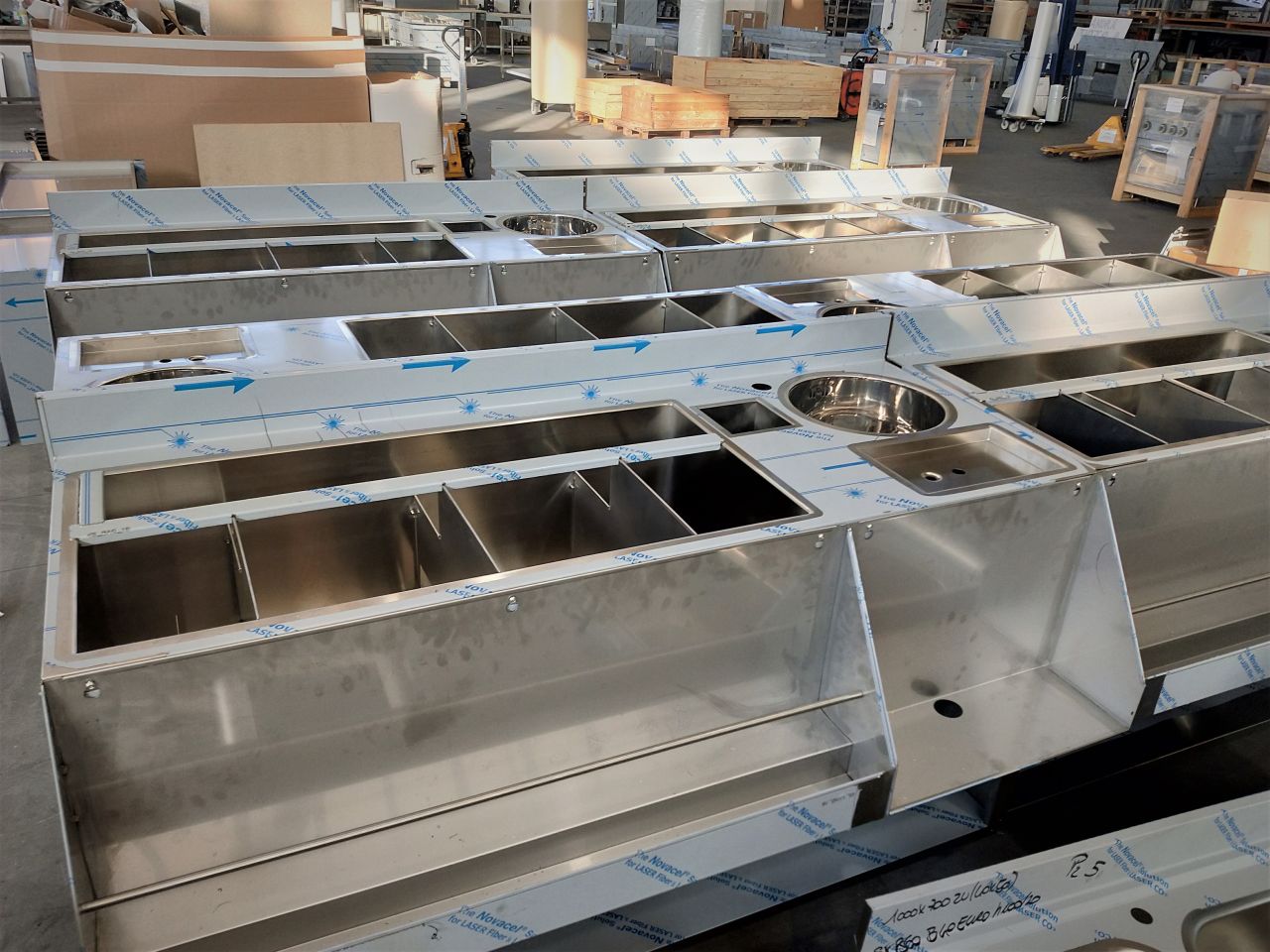
COCKTAIL STATIONS
Fancy a cocktail?
And fancy knowing where the name cocktail come from? Well, there are several theories….
Who says it is about the custom of colonial-era American innkeepers to mix spirits leftovers (tailings) into one casket and then sell it at a cheaper price (the cock, as weird it may sound, was the name of the cask tap).
Or maybe a drug store’s owner in Louisiana, who used to mix drinks made of spirits, water and bitter in an eggcup, which in French is called coqueterie, a loanword, soon altered in Cocktail.
In the XIX century, the English travellers in the States were horrified at how their transatlantic cousins mixed fine gin with other liquids. They used to call (contemptuously) said experiments with the same name given to pleasant women with questionable ethics, cocktails.
Finally, David Wondrich, a historian passionate about the topic, gives us his version, which isn’t very romantic for sure: it comes from the habit the horse traders had, to put ginger (or pepper) inside the horse rectal orifice, in order to make the animal raise up (cocking) his tail, making him look more… peppy!
Anyway, the cocktail station made by Inox Bim is ideal for helping you making cocktails.
Which is way easier that putting some spice up a horse’s anus.

 Italiano
Italiano
